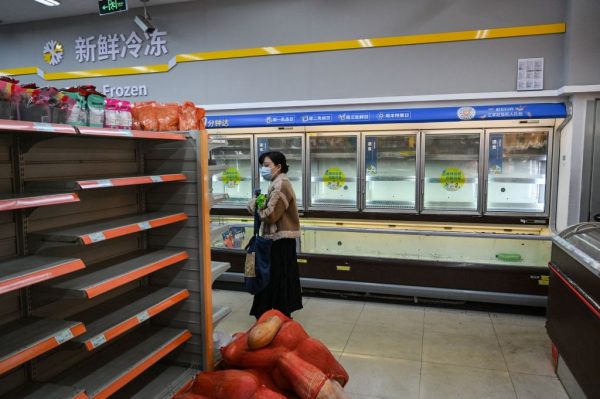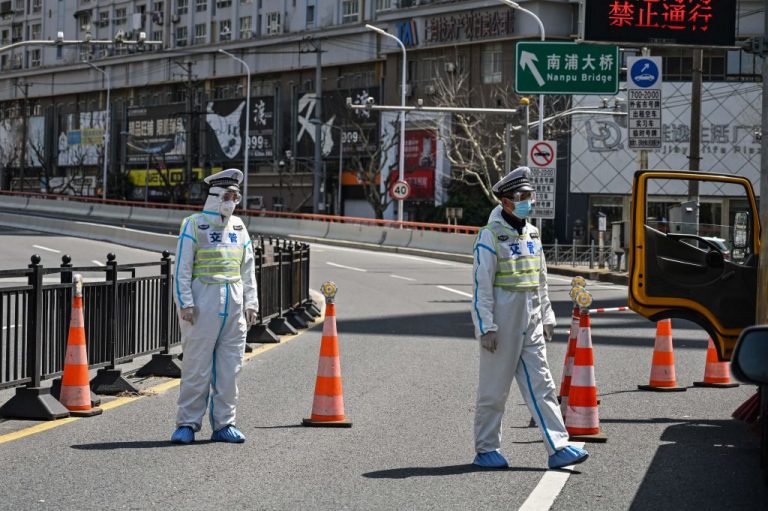In a desperate bid to control a growing outbreak in Shanghai, authorities in China have enacted the most extensive COVID-19 lockdown since the pandemic first started in Wuhan over two years ago.
The financial hub, home to over 26 million residents, has been placed into a citywide lockdown as more questions are raised over the financial and economic toll the nation’s stringent “Zero-COVID” measures are taking.
Previously, Shanghai had managed its smaller previous outbreaks with limited lockdowns of housing compounds and workplaces where the virus was reported to be spreading.
This will be the first time authorities have decided to lock down the entire city.
MORE ON CHINA’S CORONAVIRUS SITUATION:
- People in Shenzhen Jump Off Buildings in Protest of Prolonged Lockdowns Under China’s ‘Zero-COVID’ Measures
- China Seeing Worst Rise in COVID-19 Cases Since Start of Pandemic, More Tragedy and Lockdowns Ensue
- China Builds Six COVID Hospitals in Jilin Province, 6,000 Students Locked Down Within School Campus
- Hong Kong Hospitals Placing Body Bags Under Patients’ Beds as COVID-19 Surges Out of Control
Shanghai’s new citywide lockdown will be conducted in two phases, authorities said. The city’s Pudong financial district and nearby areas will be locked down from March 28 to April 1 in order to allow health workers to conduct two rounds of mass testing, the local government said in a notice released on March 27.
Success
You are now signed up for our newsletter
Success
Check your email to complete sign up
In the second phase of the lockdown, the vast downtown area west of the Huangpu River that divides the city will start its own five-day lockdown lasting from April 1 to the 5th.
Under the lockdown, residents will not be allowed to leave their residential compounds and were told that food and essentials will be delivered to their homes. Businesses and firms that are not considered essential have been ordered to close until further notice and all public transportation will be suspended.
Supermarkets emptied by panic-buying
Under the Chinese regime’s COVID regulations, local authorities across the country have stringently upheld orders which have included disinfection theatrics, draconian lockdowns, mass testing and travel restrictions.

In some cases, the heavy-handed measures have resulted in violence and tragedy as residents are arrested or even beaten by authorities if they are found to be breaking quarantine. Some videos have also shown desperate residents committing suicide by jumping from the top of locked down buildings as prolonged quarantines and rapidly dwindling supplies of food and essentials have driven some people over the edge.
Panic-buying was also reported over the weekend as terrified residents cleared supermarket shelves of food, beverages and household items. Additional barriers were being erected in neighborhoods yesterday (March 28), with workers in hazmat suits checking residents at security checkpoints.
“Everything in our store has been sold out. Frozen food, vegetables, instant noodles…are all gone, even crisps, eggs, and meat are gone,” a shop owner in Pudong New District told The Epoch Times.
No end in sight
Already, many communities within Shanghai have been locked down for the past week, with housing compounds sealed off with plastic barriers and residents required to take multiple nucleic acid tests to test for COVID-19. Shanghai’s Disneyland theme park is among the businesses that closed earlier and electric automaker Tesla is also suspending production at its Shanghai factory, CNN reported.
Shanghai detected another 3,500 cases of infection on March 27, though all but 50 were people who tested positive for the virus but were not showing any symptoms. While people who are asymptomatic can still infect others, China categorizes such cases separately from “confirmed cases” – resulting in much lower totals in daily reports.
Nationwide, 1,219 new confirmed cases of domestic infection were detected over the weekend, with more than 1,000 of them in the northeastern province of Jilin, along with 4,996 asymptomatic cases, China’s National Health Commission reported on March 28.
Two deaths were reported on March 20 in Jilin. Before that, mainland China’s official death toll had stood at 4,636 for a year. Fueled by a more contagious Omicron variant, the Chinese authorities have reported over 56,000 confirmed cases nationwide this month, with the surge in Jilin accounting for most of them.
The province is home to roughly 24 million people and was placed into a citywide lockdown on March 13 – the first time China had restricted an entire province since authorities locked down the entire city of Xi’an for three weeks in late December last year.
During this time, residents in Xi’an reported being barricaded inside their homes and essential services such as getting groceries and accessing medical services were completely halted. Posts on social media showed desperate residents going hungry, with some even resorting to trading items such as iPhones and electronics in exchange for food and supplies.
The number of coronavirus cases and deaths reported by the Chinese authorities since the beginning of the pandemic in late 2019 is considered a tiny fraction of the real figures, with Beijing admitting to just over 100,000 total cases prior to the current surge.
Nearby South Korea, a country of around 51 million, has racked up more than 12 million positive PCR tests as of March 29, despite strict measures to control the virus. The country has reported 15,000 deaths from COVID-19.
China’s population stands at 1.4 billion, or nearly 28 times that of South Korea.














